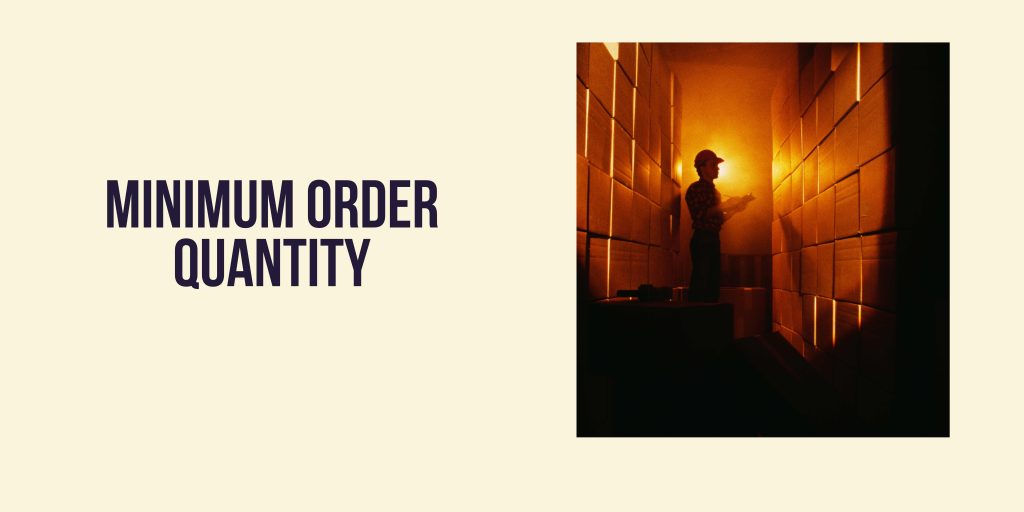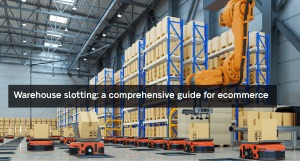Ecommerce businesses often buy raw materials or ready-made products from manufacturers. The challenge here lies in balancing inventory levels to meet consumer requirements without overstocking or understocking.
Minimum order quantity (MOQ) is a parameter set by suppliers because bulk production is more convenient for them but this can often hinder an ecommerce’s inventory balance. In fact, sometimes inventory requirements might not align with the supplier’s MOQ.
In this article, we will discover how to overcome the challenges of MOQ and offer strategies to enhance MOQ benefits.
What is Minimum Order Quantity (MOQ)?
Minimum order quantity is the minimum quantity of items a business is prepared to sell to a customer. MOQs are set so that manufacturers or sellers can ensure they gain some profit from a sale.
Minimum Order Quantity and inventory challenges
While MOQ is obviously an advantage for suppliers so that they do not just cover production costs but also gain profit from a transaction, it can hinder a brands’ flexibility in balancing inventory.
For example, a supplier may require an ecommerce to purchase a MOQ of 500 units but if the brand is still expanding, it may not be able to sell all the items, leading to increased warehousing costs.
Therefore, it is important for retailers to leverage tools that can accurately forecast demand and storage solutions that can accommodate their needs adequately.
Minimum Order Quantity benefits
Apart from being an advantageous requirement for suppliers, MOQ can also benefit ecommerce brands.
Some of the majour benefits include cost-savings for bulk purchases in an economy of scale and access to exclusive offers, as well as better negotiation terms.
How to calculate minimum order quantity
Universal MOQ does not exist, precisely because every business has unique needs. Usually ecommerce brands can either opt for smaller MOQ at a higher price or a larger MOQ at a more convenient cost. In short, there isn’t a formula for calculating minimum order quantity, but there are a few steps to take in consideration. Let’s find out.
- Determining demand
Before a retailer decides to buy stock, it is important to have a selling planning strategy. Employing a reliable demand forecasting tool is important to predict demand according to product type, competition, seasonality. This data can help ecommerce businesses make informed decisions on MOQ to buy or negotiate.
- Calculating break-even point
The break-even point represents the unit cost at which there is neither profit nor loss. Usually, suppliers and brands calculate this, and set their MOQs accordingly, thus making sure they gain profit.
- Understanding warehousing costs
Size, duration of storage, and special requirements determine warehousing costs. It is important to know these expenses before investing in inventory or expensive MOQ.
- Setting your MOQ
At this point, having all the previous information, you can set your MOQ. The balance between price and MOQ is important to make sure you gain earnings. In fact, once you know your break-even point, storage costs and have an idea of customer demand, you can set the price at which you sell your products in an informed and accurate way.
Minimum order quantity (MOQ) can be seen as a challenge or an opportunity, depending on a business’s specific needs.
With the right strategies and tools and a partner like eLogy by your side, you can turn MOQs into an opportunity for growth and increased profitability.
Tips for Optimizing MOQs
Setting Free Shipping Thresholds for Customers
Why it Works: By setting a minimum purchase amount to be eligible for free shipping, you are able to cover costs associated to MOQs and increase average order value.
Multiple warehousing
eLogy has a number of warehouses to allow retailers to distribute inventory across multiple warehouses to offer customers faster deliveries at reduced costs. This happens because fulfillment will take place from the nearest location to the customer ensuring that the shortest delivery route is always selected, resulting in large savings on shipping and transport.
Offer incentives to customers
Why it Works: discounts on bulk purchases and special deals can be a way to encourage customers to purchase more items, like the “Buy 3 Get 1 Free” option is a solution to move stock quicker.
Leveraging automation
Why it Works: leveraging technology ensures that you always have a clear view of how much stock to order at the right time, reducing the risk of overstocks and stockouts. Investing in inventory management software can provide precious insights for your business and even automate reorders when stock reaches a certain threshold.
With eLogy, you can streamline your inventory management and fulfillment processes. By integrating with this modern fulfillment platform, you can leverage the power of built-in inventory management software to understand:
- Stock Levels History: levels of a specific SKU at a given location and time
- Real-time inventory counts
- Stockout Forecast: projected stockout date
- Notification alert for low stock to make sure you have enough lead time to refill inventory before it’s too late.
- Sales Frequency: sales frequency of each product across different channels
- Demand analysis and identification of sales trends
- Report of items with the highest sales volume
- Inventory Turnover & Cost Analysis
- Warehousing cost analysis
Setting your Minimum Order Quantities (MOQs) is essential for managing inventory and ensuring profitability.
Make the most of MOQ with eLogy.




